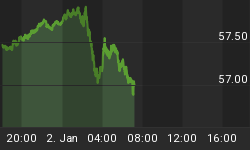Falling infection rates to the lowest level since January and President Xi Jinping’s visit to Wuhan yesterday suggest all is returning to normal in China.
Some are looking for a V-shaped bounce back and maybe even a softer hit to Q1 GDP growth than previously feared.
A Reuters poll of Economists reported last week a revised growth forecast for the first quarter, falling to a median of 3.5% this quarter from 6.0% in the fourth quarter of 2019 — optimistically, a full percentage point lower than predicted in their last poll Feb. 14.
But the FT has poured cold water on such rosy predictions, quoting Bert Hofman, director of the East Asian Institute at the National University of Singapore, who predicts first-quarter growth year might be negative, falling somewhere between -2.0% and -6.5%.
Hofman, a former China country director for the World Bank, went on to say, “Services and consumption now contribute more than half of China’s GDP. The economy is, therefore, more sensitive to a drop in domestic demand resulting from the epidemic and the government’s control measures. It is harder to make up lost grounds in services than it is in manufacturing.”
Zhang Anyuan, chief economist at CITIC Securities, is quoted as saying, “How is it possible for the economy to achieve positive growth in the first quarter when more than 1bn people stayed at home for nearly a month?”] Related: China's $570 Billion Stimulus Is A Boon For Copper
Even though Beijing has embarked on the gamble of directing firms to restart and is reportedly subsidizing workers’ travel to encourage a rapid return to factories and workshops, it is by no means clear how quickly positive growth will return.
Steel mills, for example, are running at a relatively healthy 77% capacity utilization. However, inventories are already at record highs, while anecdotal evidence suggests demand remains very weak.
Infrastructure stimulus measures will undoubtedly create growth, but the impact is deemed likely to be limited this year, with the majority of projects not getting underway until 2021.
Some industries, like tourism, will take much longer to recover. International tourist travel still remains banned. The population has been so traumatized that domestic tourism is unlikely to pick up anytime soon for fear of a resurgence and potential lockdown in the event of localized infection rates rising again.
Therein lies a gamble at the heart of China’s efforts to stimulate an economic recovery.
Stringent efforts are being made to restrict social contact and suppress infections. At the same time, life needs to return to some semblance of normal for the economy to recover.

Sources: Refinitiv/China Customs via the Financial Times
At the same time, export industries have taken a hit. There will be some companies that find massive pent-up demand, like electronics, where the supply chain was initially ruptured by the lockdowns. Other more transactional businesses, like metals, will be returning to work just as export markets head south due to rising infection rates in those export markets – South Korea, Italy, Japan and, increasingly, other European markets. Related: Can Trump Push Through Payroll Tax Relief?
Export growth of 7.9% in December collapsed to -17.2% in the January-February period, with all major export destinations contracting.
Rather than a V-shaped recovery, a much more gradual and spluttering recovery is now appearing more likely.
ANZ reported a collapse in PMI estimates, with sub-indices such as production, new orders, and new export orders down to 27.8%, 29.3%, and 28.7%, respectively.

Source: Refinitiv via Financial Times
The potential for China to lift global GDP if Europe, the U.S. and mature southeast Asian markets slow in the face of the spreading virus, therefore, it appears limited in the first half of this year.
China will struggle to achieve 3-4% growth for the year as a whole. Even that figure would suggest a rapid return to 6% growth from Q2 through to the end of the year, which is highly unlikely in a country still generating, according to The New York Times, nearly 100 new infections a day.
China can’t afford to risk a “return to normal” just yet.
By AG Metal Miner
More Top Reads From Safehaven.com:

















